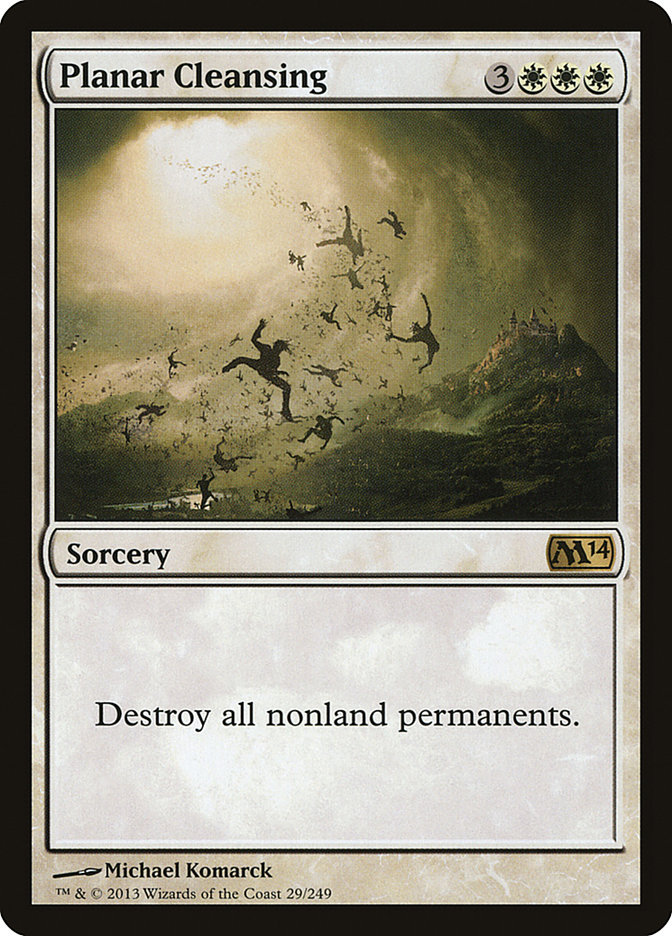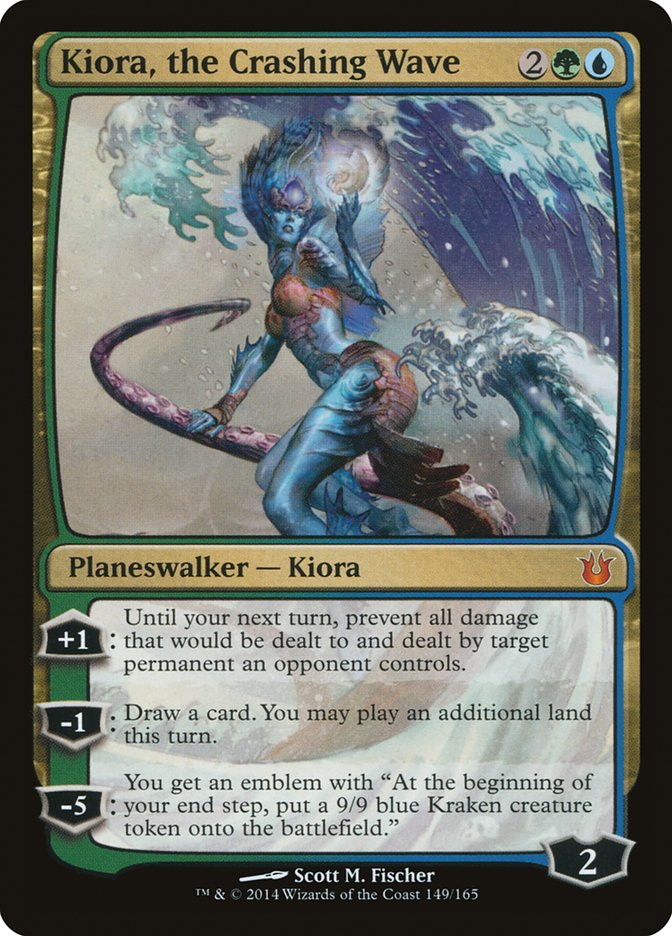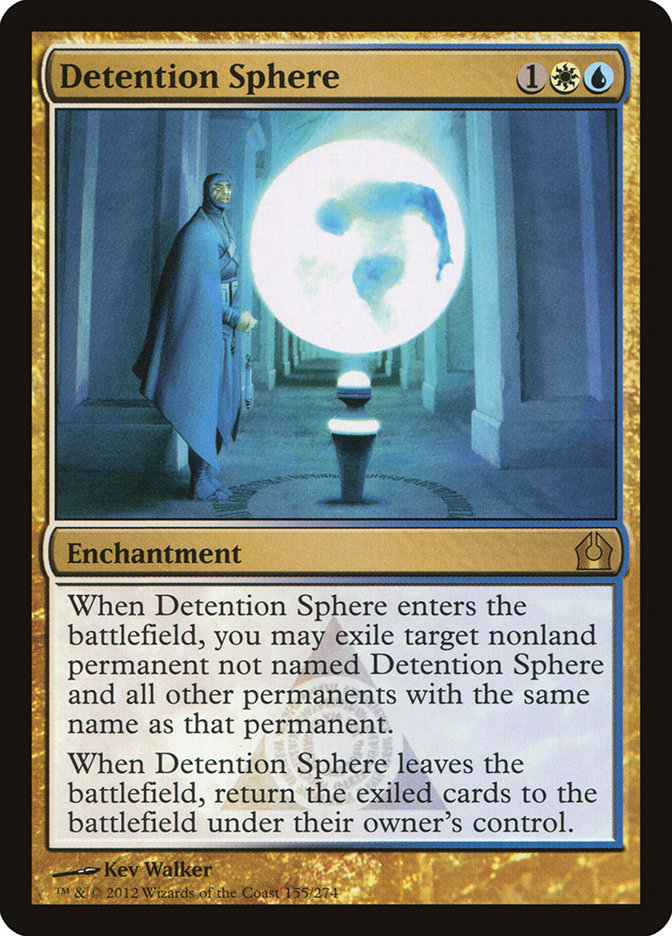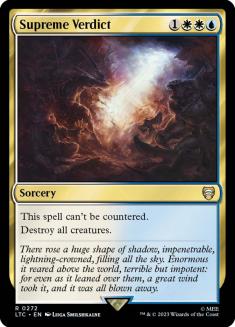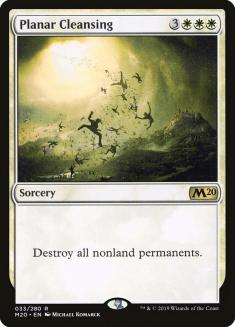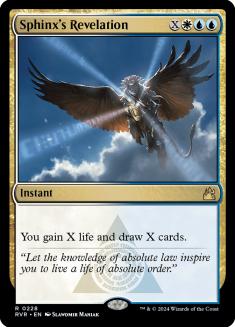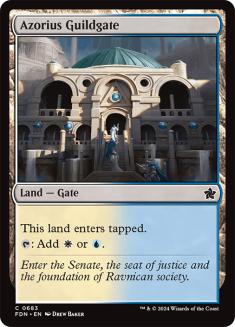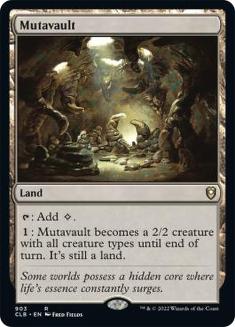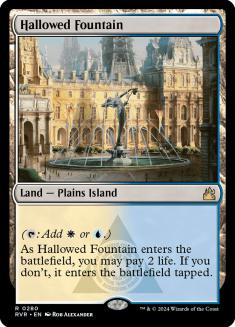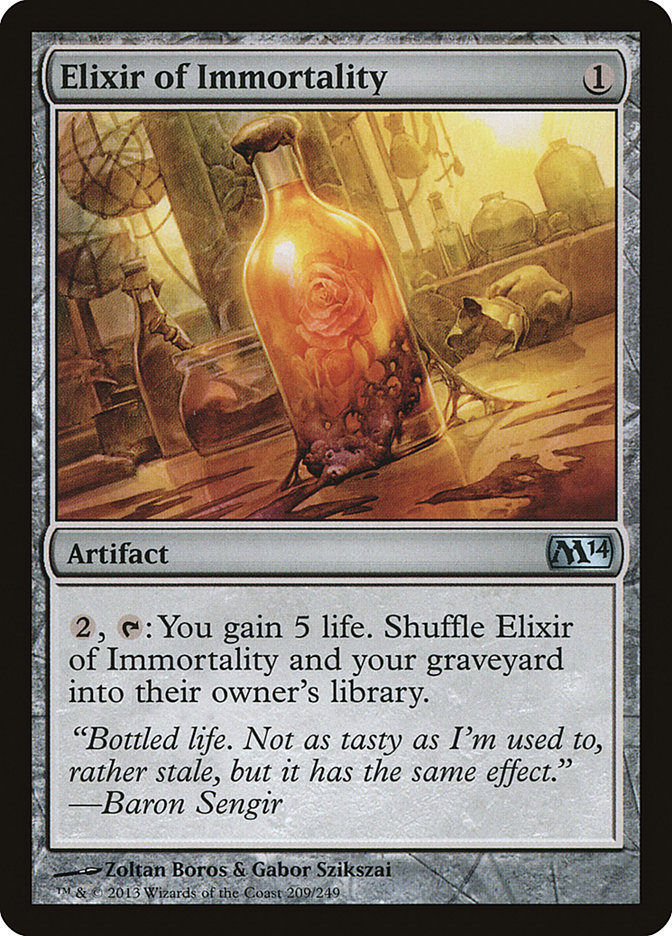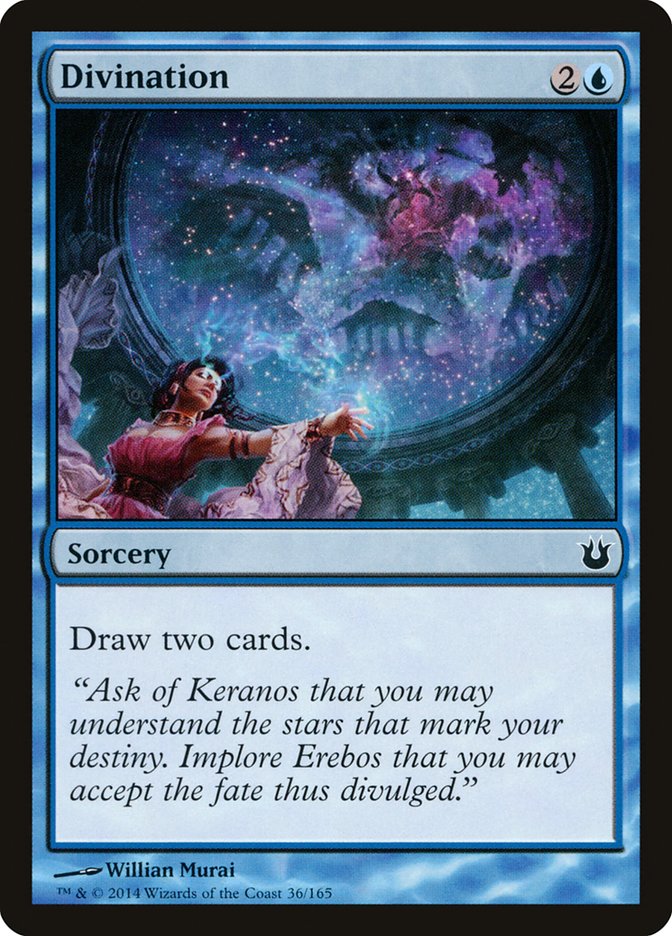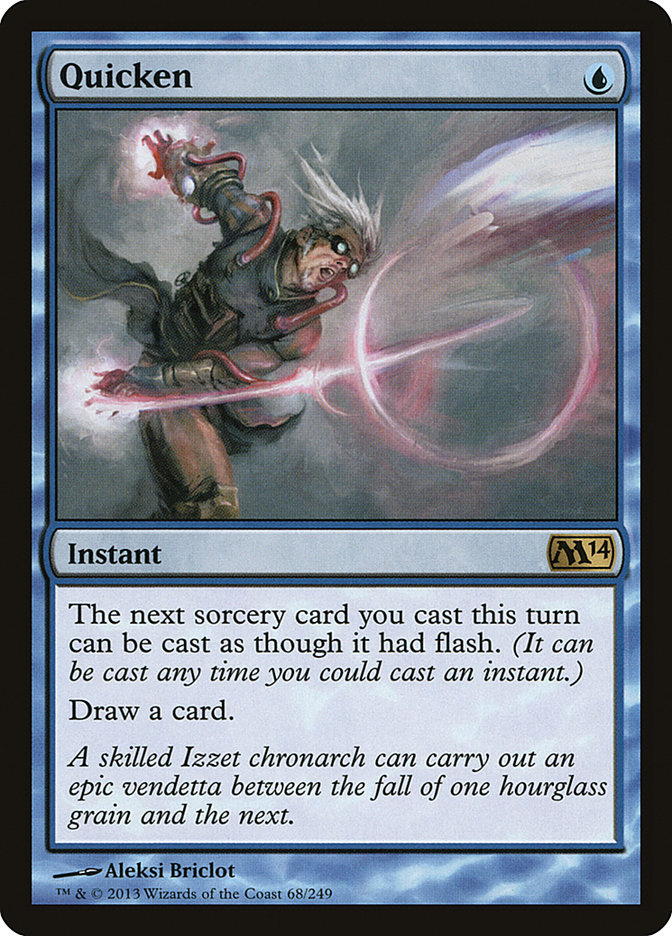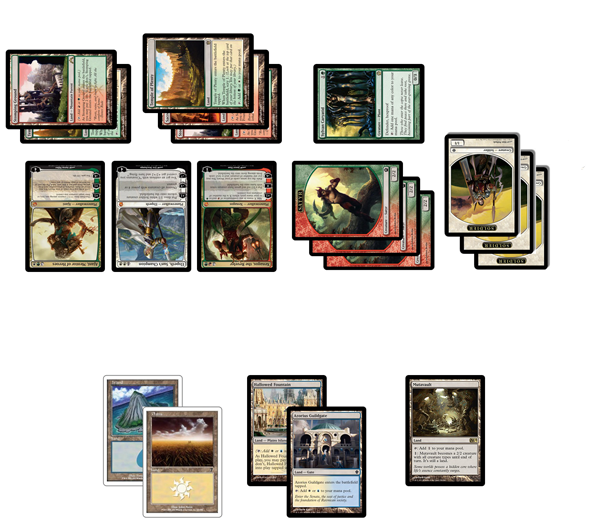
From the look of it, things were going very well for my opponent. I had already mulliganed to five, and offered him very little resistance. This had
allowed him to assemble an impressive board of Xenagos, the Reveler; multiple Saytr tokens; Ajani, Mentor of Heroes; Elspeth, Sun’s Champion; multiple
soldier tokens; and a Sylvan Caryatid, to my board of exactly nothing.
He must have been sitting very comfortably, as no normal U/W Control deck would have any reasonable way out of this situation. There simply wouldn’t be
enough time to play all of the Detention Spheres and Supreme Verdicts necessary to battle back from this unenviable position.
Lucky for me though, I was not playing a normal U/W Control deck. As I laid my sixth land, I played what would be only my third spell of the game:
That, as they say it in the business, is.
That was game 1 of round 1 of SCG Open Series in Providence last weekend, where I would eventually take the 4th seed into top 8 at 8-1-1. The deck I played
was essentially the deck from my last article, with the lone addition of a Jace, Memory Adept to my sideboard.
Creatures (1)
Planeswalkers (4)
Lands (27)
Spells (28)
- 2 Last Breath
- 2 Syncopate
- 4 Divination
- 3 Planar Cleansing
- 4 Azorius Charm
- 4 Supreme Verdict
- 4 Sphinx's Revelation
- 4 Dissolve
- 1 Deicide
Sideboard

The decks I played against were pretty much as expected in the first two rounds, until we hit an interesting one round 3.
Frank Lepore’s Bant Walkers deck in round 3 was a fun little curveball, and in game 1, one of the weaknesses of the Planar Cleansing plan was exposed.
Frank played a turn 3 Kiora, the Crashing Wave off a Sylvan Caryatid on the play and with no Syncopate to answer it, I was completely at the mercy of the
impending ultimate. Frank was able to fire off the ultimate on turn 6, but despite the free 9/9 every turn, I was still able to take the game by slowing it
down with Planar Cleansing and eventually landing an Elspeth, Sun’s Champion. The game finally ended many turns later when I was able to ultimate both
Jace, Architect of Thought and Elspeth in the same turn. To say it was a wacky game would be an understatement, but despite the early weakness to
planeswalkers, my Planar Cleansings were devastating against his army and his Detention Spheres.
The rest of the day featured all of the usual suspects, and my Planar Cleansings put in some solid work. Over the course of the day, I also played against
Naya Walkers, Mono-Black Devotion splashing green, Mono-Black Devotion splashing white, Esper Control, Jund Monsters, and Mono-Red Devotion splashing
white.
While I had a few opponents leaving in/sideboarding in answers to Detention Sphere early in the day, in the latter rounds people mostly knew what was up.
The important thing to recognize now is if the deck is actually good without the surprise factor. I knew writing about it and playing it in the Open before
the invitational would let the cat out of the bag per say, but it’s also very nice to have some real world success with the deck before the big show.
In top 8, I was able to dispatch the Jund Monsters deck that gave me my only loss in the swiss, and then it was on to top 4 against Ross Merriam’s
Mono-Blue Devotion deck. Mono-Blue has always been a fantastic matchup for U/W Control, and even though the Planar Cleansings are worse than Detention
Sphere in the matchup it still feels very good. Although, as Ross would find out many hours later, that’s why you play the games.
I took game 1 in convincing fashion, but game 2 I would keep a somewhat suspect hand:
While this hand might be somewhat okay in game 1 on the strength of Supreme Verdict, in post-sideboarded games he will have more non-creature permanents
and counterspells instead of small, crappy creatures, and it is very important for me to have cheap interaction. I would end up losing a game where my hand
got clunked up with another Planar Cleansing and Sphinx’s Revelation that probably could have been avoided.
Game 3 was absurd, and if you get a chance to watch it you really should:
http://www.twitch.tv/scglive/b/536303126
After we both mulliganed, I kept a two land hand with a Divination and ended up missing my 3rd and 4th land drops while Ross played a Nightveil Specter and
a Jace, Architect of Thought. There were numerous points in this game where I was certain I was going to either lose for sure or win for sure, but
ultimately, I couldn’t find my way out of the situation and had to settle with another Open Series top 4 exit.
Despite falling short of a trophy, it certainly feels good to have an idea, put my money where my mouth is, and come up with a respectable finish.
Due to my success, and some excellent word of mouth advertising from our own beloved Cedric Phillips, a number of questions have popped up on my last
article about the deck.
Why no Elixir of Immortality?
The deck has already been popping up on Magic Online, and a few people have opted for an Elixir of Immortality over the second Elspeth, Sun’s Champion.
I’ve been pretty vocal about not being a fan of Elixir at all, and while this version of the deck might be most suited for it, I still think it is just too
bad in the early game to really want it. Elixir would be great if you could somehow guarantee that it would be in the bottom thirty cards of your deck at
all times, but clearly that is not the case. When you draw it in your opening hand, it is essentially: three mana, gain 5 life. That is most certainly not
worth a card. At any point in the early or mid game, this is all it ever will be, and it doesn’t really become relevant until the very late stages of the
game. You know what card is also very relevant in the late stages of the game, but can also completely turn a game around on turn 6 and is fantastic in
your bad matchups?
Exactly. While Elixir seems cool in theory because you can really skimp on win conditions in your deck, it still takes up the card slot that said win
condition would take up anyway. What’s great about most of your win conditions is how well they assist you in controlling the board. There’s a reason
Gideon Jura was so much better than Baneslayer Angel.
Yes, Elixir is good in the mirror game 1, but post board I don’t think it is nearly as relevant as each deck gains so many more threats and answers that
the game will be decided before decking/getting so deep that Elixir matters actually makes a difference.
Basic mirror strategy?
Without crutches in the mirror like Elixir, Counterflux, or Thoughtseize (which isn’t even that good in the mirror), mirror play comes down to a few key
factors.
-Make land drops every single turn – this can mean keeping land heavy hands, scrying lands to the top, and making sure you can keep chaining Divinations
and keep the cards flowing.
-Save your counterspells for absolutely relevant spells – don’t bother countering small to mid-sized Sphinx’s Revelations, especially game 1. You only have
so many counters, and you need to ensure you can match yours up against theirs. Post board things become different as you have more threats, which means
choosing when to counter spells becomes much more dynamic.
-Understand the difference between the lists with and without Detention Sphere. If they have Sphere and you have Planar Cleansing, you get to a nice
position where if they ever Sphere one of your planeswalkers or threats, your Planar Cleansing now becomes another copy of that threat, in addition to
being an answer to their threat. However this also means that you will have a bit more trouble dealing with an early Jace of either variety and that they
become more important to counter.
One Negate maindeck?
I experimented with one maindeck Negate for a bit when I was testing the deck, but ultimately decided to go to Deicide as I wanted to ensure I had some
action against a resolved Underworld Connections game one against Mono-Black Devotion. With that deck on the decline, it is possible the Deicide could go
back to being a Negate, as there are targets in pretty much every relevant matchup. There is definitely some tension though.
Pros:
The big draw is that we want to play as many two mana answers as possible. This allows us to curve cleanly into turn 3 Divination without giving up too
much tempo, and also ensures we don’t have to discard to a turn 3 Divination on the draw.
Negate is also a good answer to early non-creature permanents that Detention Sphere used to handle that might be a bit too quick for Planar Cleansing to
deal with.
Cons:
Too many counterspells can put you in a risky proposition. We do need to tap out fairly often for card draw, planeswalkers, and wrath effects, and we can’t
afford to draw counterspell after counterspell when our opponent already has a threat on the board.
Counters are also quite weak against Thoughtseize decks, as very often we are playing off the top of our decks and trying to draw into quality answers.
Lastly Negate is a bit narrow, and there are definitely times where it will be dead. While Deicide is also narrow, it doesn’t have a built in timing
restriction like Negate does.
It is definitely a very format dependent question.
The red splash?
I briefly mentioned the red splash in my last article, and I did try it online for a little bit. It looked something like this:
Creatures (2)
Planeswalkers (2)
Lands (18)
Spells (38)

While you gain some nice synergy with Kernos, God of Storms and some mirror power with Counterflux, you lose one of the things I like most about U/W
Control – you can just play untapped lands and cast spells! The 12 temple manabases just infuriate me, as they slow the deck down so much and take a lot of
the punch out of your counterspells. This is not Legacy, and we are not simply trying to improve our card quality – we need lands and spells and that
requires drawing as many cards as possible while playing our spells in a timely manner.
Quicken?
Quicken seems sweet until you realize you actually have to put it in your deck and draw it in your opening hand. Yes, all the of the dream scenarios seem
nice – instant speed Supreme Verdict! Build your own Inspiration! But the reality is that most of the time you are just going to cycle it anyway so you can
draw a more relevant card or more lands. Is it bad? No, but it’s not good either and not really worth the space unless we really need to cast Supreme
Verdict at instant speed.
Why are you playing Goblins again?
Hey that one’s not about U/W Control! Well I guess I’ll answer it anyway. Honestly? It’s mostly just card availability. Unlike some of my friends, I don’t
have an expansive collection I’ve been building for the last fifteen years that has appreciated 1000% of it’s value over the last five years (cough cough,
go to hell Max Tietze), so I usually borrow my Legacy decks. The last two events I just didn’t really have time to get anything together, and I already
have Goblins sleeved up so I figured why not.
I don’t think the deck is awful, just not as good as it was, and I made top 16 with it at the last Open in NJ. This past weekend did not fare as well, as I
got destroyed and reminded of the fact that I will definitely not be playing it at the Season Two Invitational. I will likely be joining the previously
mentioned Maximus in some sort of Esper Stonebladery.
The Invitational
The crown jewel of the Open Series is next week, and as long as I’m still feeling it, I will likely be continuing to Planar Cleansing people. It’s been a
lot of fun looking over the Magic Online results over the last few days and seeing tons of Planar Cleansing lists, and I wonder how much everyone will have
caught up by next weekend. With my hand tipped is the deck still good? We will find out.


